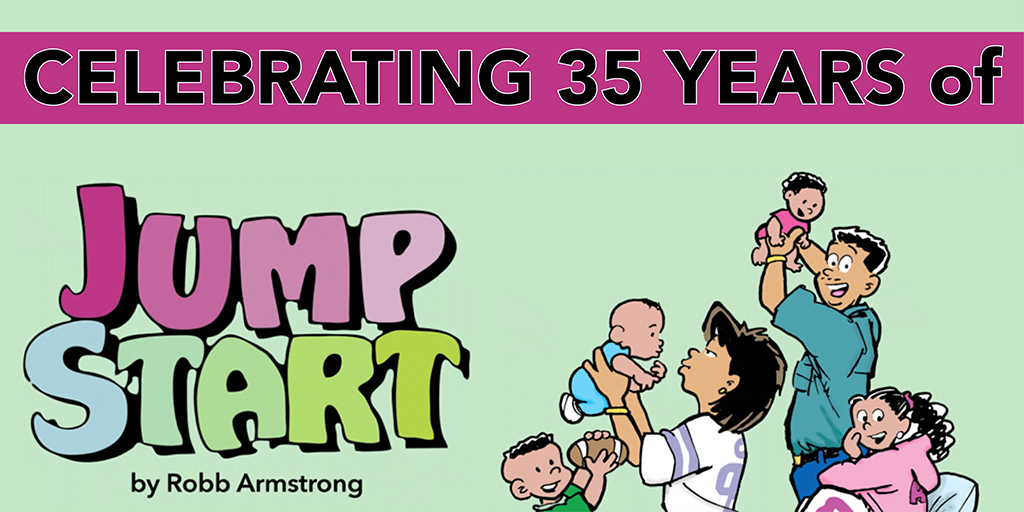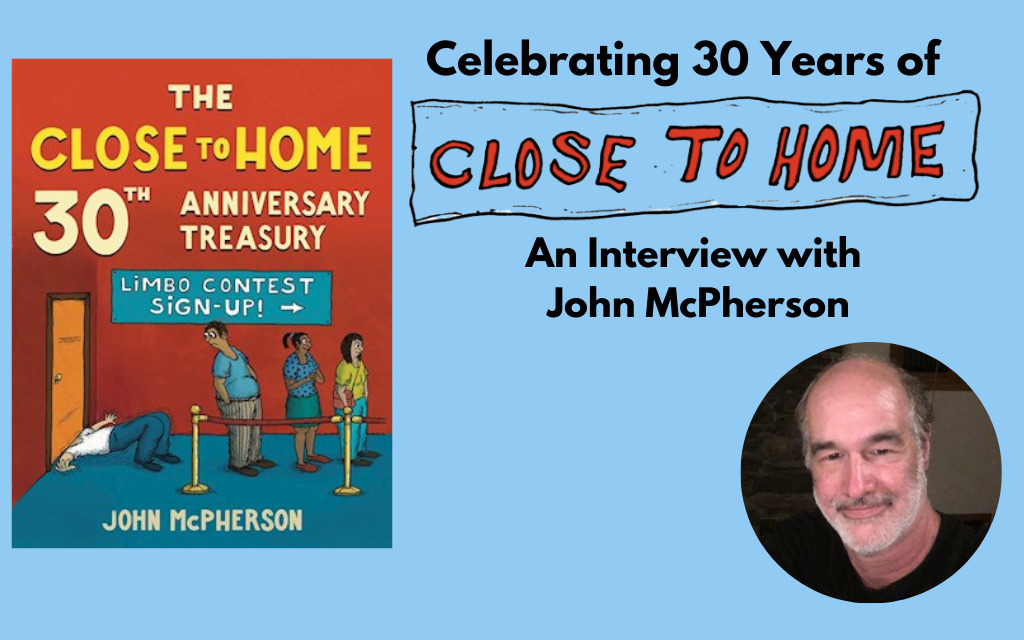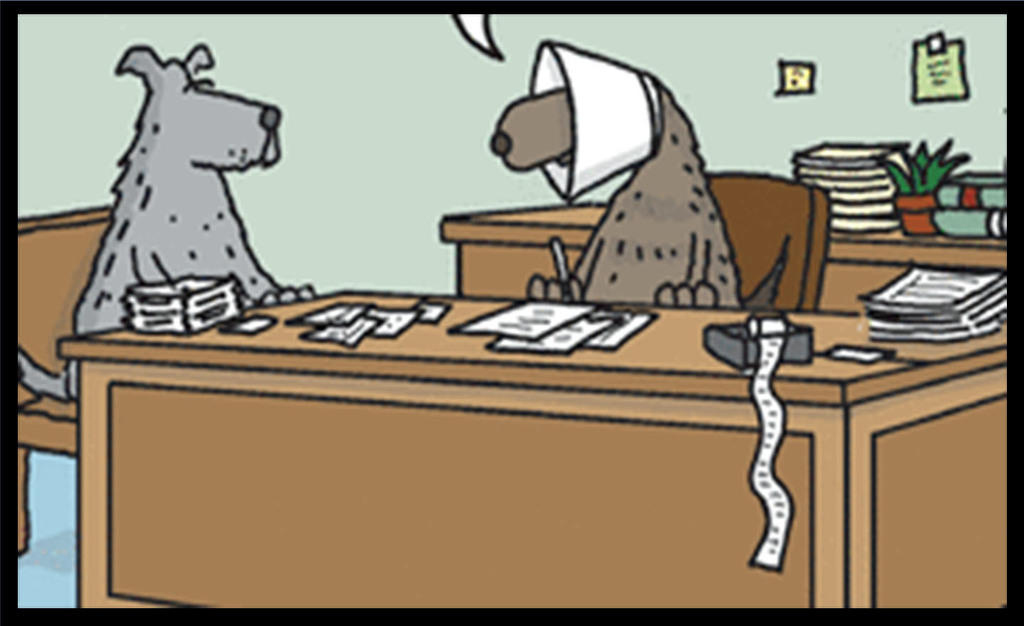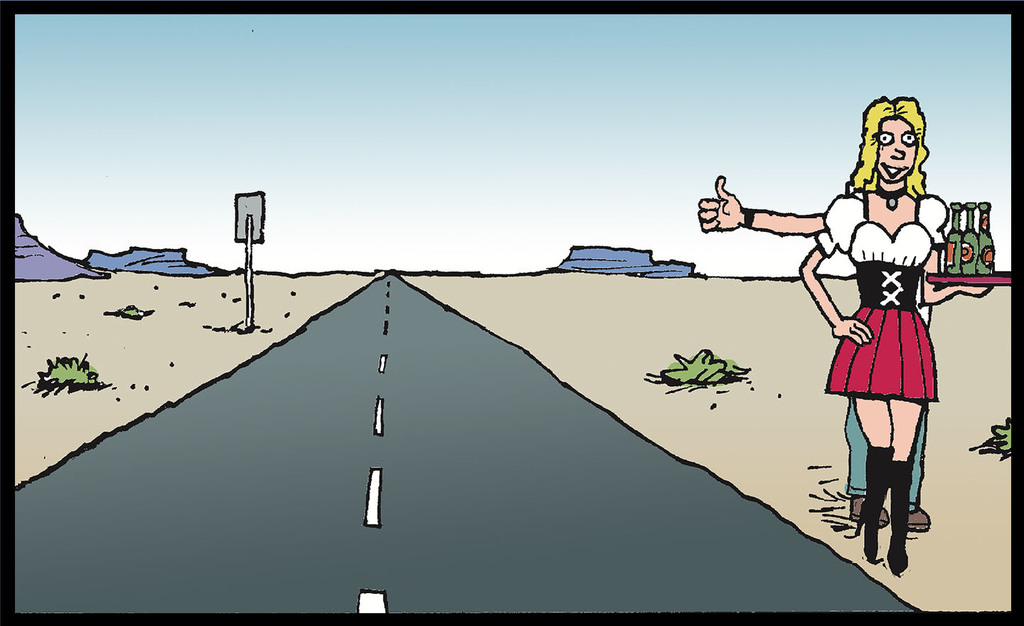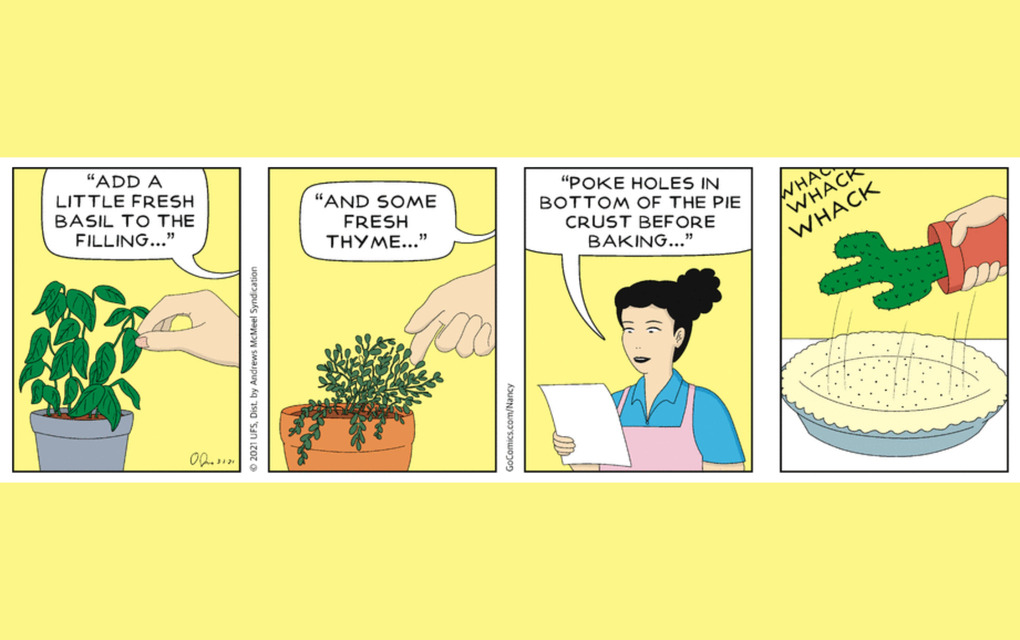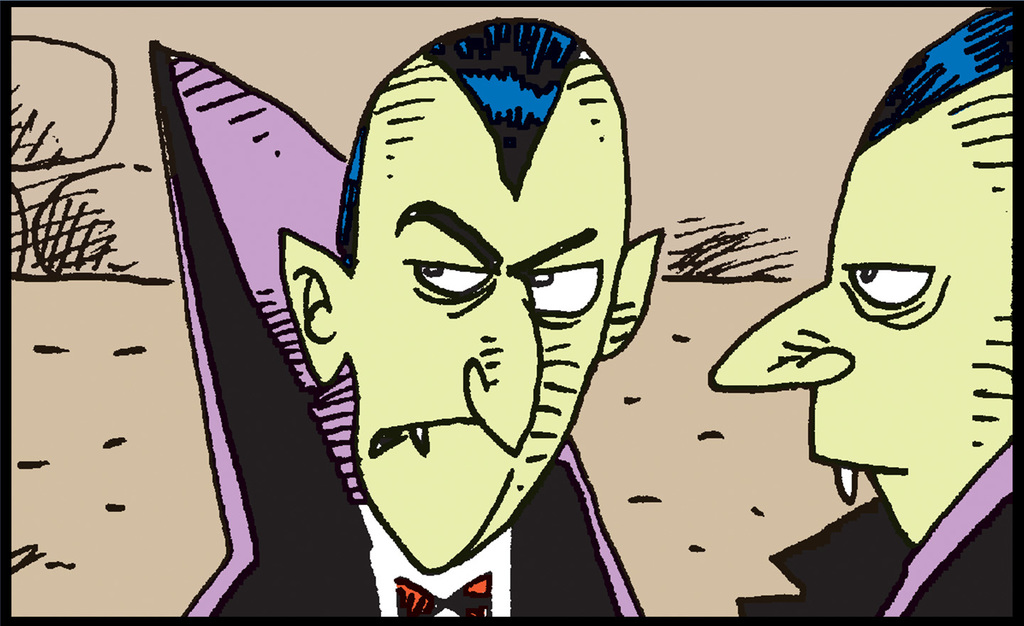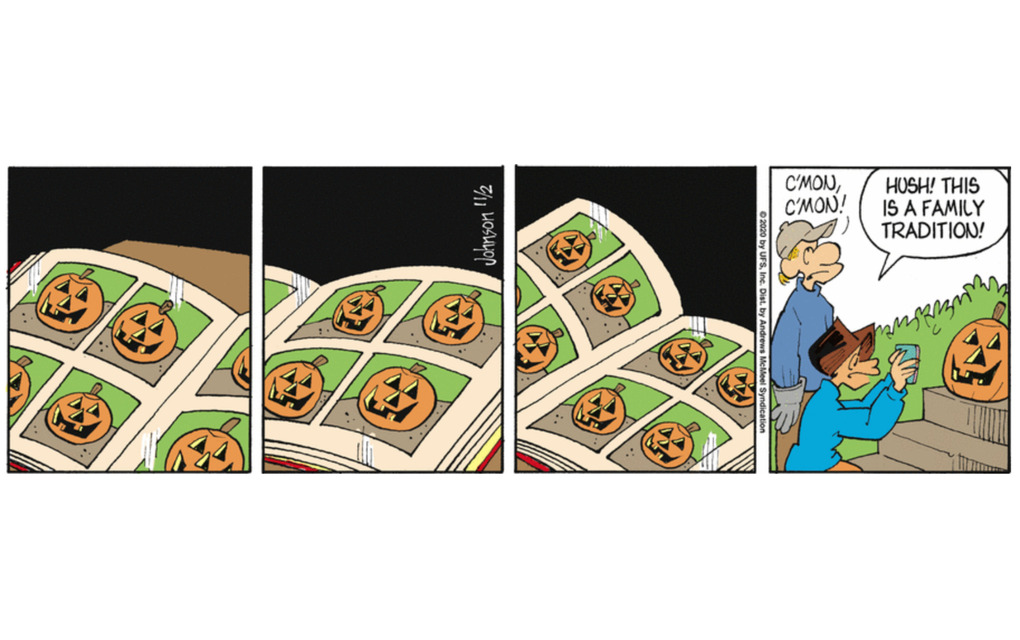Randy Glasbergen (Glasbergen Cartoons, Thin Lines)
by GoComicsWhen did you get started and how did you become a cartoonist?
Growing up in the 1960s, I was known among my classmates as the kid who could draw. I was influenced by the cartoons I saw on television at the time - Popeye, Rocky and Bullwinkle, all the Hanna-Barbera stuff. Later, when Adam West became America's new sensation, I had my superhero phase and spent hours drawing my own homemade comic books.
In the 1970s, during my early teens, I became more aware of magazine cartoons and comic strips. My mom ran a beauty shop in our home, so there were always plenty of magazines for her customers (and me) to browse through. Back then, most of those magazines included many single-panel gag cartoons. When I was 15, I began submitting my own cartoons to some of those magazines, and actually started selling them on a steady basis throughout my high school and college years. My first big sale was in 1972 to Sports Afield for $50, followed soon by many other magazines, including Saturday Review, National Enquirer, The Wall Street Journal, Saturday Evening Post, New Woman and Better Homes and Gardens. After a year of journalism studies in Utica, New York, I left college, moved into a genuine slum apartment for $60/month and began freelancing full-time. Gradually, over the years, I built up my career, stacking one small accomplishment on top of another. No big breakthrough moment - just years of doing what I love and enjoying small victories as they came along.
Have you ever been syndicated?
In 1982, with two young daughters to feed, I accepted an offer to take over an established syndicated panel called The Better Half, which was syndicated originally by The Register and Tribune Syndicate and later by King Features. I wrote and drew that feature for 32 years, but stopped at the end of 2014 to devote more time and energy to my successful cartoon licensing business, Glasbergen Cartoon Service. When I ended The Better Half, it was appearing in approximately 150 print and digital newspapers worldwide.
In 2007, Creators Syndicate asked me to create a weekly panel for the Health & Fitness pages of daily and weekly newspapers. I drew Thin Lines cartoons for five years, but unfortunately, it was launched at a time when newspapers were cutting costs and had no budget for a once-weekly comic. Regardless, Thin Lines has been a very successful part of Glasbergen Cartoon Service, appearing in greeting cards, calendars, textbooks, trade show displays, magazines and newspapers all over the globe. I continue to create new editions of Thin Lines, which appear on GoComics along with my daily Glasbergen Cartoons.
As a freelancer, my work has been syndicated in many forms. I have self-syndicated my cartoons to several newspapers around the world, including The Times of India, China Daily, La Nacion Costa Rica, Glasgow Sunday Mail and San Diego Times-Union. For several years, Glasbergen Cartoons were syndicated by DBR Media to hundreds of weekly newspapers that were provided with four new cartoons each week. In the early days of the Internet, I created a weekly full-color cartoon called Gigglebytes for Access Magazine, a weekly newspaper magazine supplement. I also contributed to React, a weekly newspaper supplement for teen readers.
What is Glasbergen Cartoon Service?
Glasbergen Cartoon Service is the DBA I use for my freelance work and cartoon licensing services. I offer cartoon permissions at "budget-friendly" rates for print and digital media, to help people communicate their messages with humor.
Glasbergen Cartoon Service provides cartoons for big companies and well-known authors like American Greetings, Tony Robbins, Jack Canfield, The Wall Street Journal, Oxford University Press, Dunkin Donuts, Toastmasters International, Cisco Systems and Time Warner Cable - as well as small businesses, advertising agencies, entrepreneurs, restaurants, public speakers, educators, medical professionals, real estate agents, publishers, social media managers and others worldwide from all walks of life. If you'd like to learn more, please visit my website at glasbergen.com.
Where do you create your cartoons and what does your studio look like?
I live in a very small town in a rural part of New York State. If you'd like to see an image of my town in your mind, think of Mayberry. (If you're too young to know about Mayberry, Google it.) My studio occupies three rooms on the third floor of my home - a creaky old Victorian that was a boarding house for local schoolteachers many years ago.
My studio fills three small rooms at the top of my home. In one room, I draw my cartoons on a big oak drawing board. Another room is an office where I run my business surrounded by printers, copiers, scanners and Macs. The third room is mostly for storage and supplies. I confess, I'm a better cartoonist than janitor, so "neat and tidy" isn't part of the description.
I am too lazy to repaint my walls, so I've covered all three rooms of my studio with posters -- Marx Brothers, Three Stooges, Superman and Batman from the classic TV shows, all of the iconic Universal movie monsters, like Frankenstein and Wolf Man, favorite funny people like Rodney Dangerfield, Andy Kaufman, Don Rickles, Steven Wright, old movie posters (Mel Brooks, Citizen Kane, Frankie and Annette, Woody Allen, Office Space, Of Mice and Men and many others). A life-size poser of Julie Newmar as Catwoman looks seductively over my shoulder as I'm typing this. On my shelves and cabinets, you'll see an assortment of action figures, pop culture bobble-heads and my collection of Popeye, GI Joe and Monkees toys and memorabilia. Aside from a poster of the animated Saturday morning Beatles, you won't find any cartoons on my studio walls.
My office dн©cor was inspired by parent-teacher conferences I dutifully attended when my kids were in school. I always loved visiting those classrooms where every inch had something bright and colorful to bombard the senses, on the walls, hanging from the ceiling, pasted to the windows, taped to the hallways - pictures, signs and posters everywhere. (The teacher fills the room with things to look at, then complains that your child is "distracted" !)
When I'm drawing in my studio, I usually listen to some form of Internet radio or have the TV on in the background. Not too long ago, it was nearly impossible to get a single broadcast radio station to reach my small town, so having cable TV, DVR service, Roku streaming video and music is terrific! Even with all of these choices, I tend to fall into a routine of the same channels and radio stations. I watch so many daytime court shows while I work, my kids have started calling me for legal advice.
What cartoonists have influenced you the most?
I've read so many gag panels and comic strips over the years, I must admit I've been influenced by all of them in one way or another - the good ones as well as the ones I don't care for. I could name dozens that have inspired or influenced my work, but No. 1 is gag cartoonist Henry Martin. Mr. Martin was all over the magazines when I was starting out, and he was also a regular in The New Yorker. His cartoons were both silly and serious at the same time. Instead of trying to describe his cartoons to you, just Google his name and enjoy his work. Henry Martin's daughter, by the way, is Ann Martin, author of "The Baby-Sitters Club" book series.
How many cartoons do you draw every day and where do you get your ideas?
I start my day early, around 6 AM and work until 5 or 6 PM. I usually write and draw between six and 10 cartoons per day and spend a good portion of my schedule at the computer, answering e-mail, filling orders, tending to the business end of things.
I draw my cartoons the old-fashioned way, with pencils, pen and paper on a big wooden drawing board. Not long ago, I tried drawing on a Cintiq tablet, but quickly went back to my old ways. I use a black Flair pen and heavyweight bond typing paper. I add color on my Mac using a great little software program called Colorize.
I write most of my cartoon ideas mid-morning, after I've had a few cups of coffee, before the early afternoon brain fog rolls in. Most days, I try to focus on a particular topic and write ideas accordingly. One day I might focus on a topic like "corporate diversity," another day it might be "fish, bugs and frogs" or "smart watches" or some other topic that I have an urge to write about. Now and again, I get to write for a specific client who has hired me for a special project, and that's always a fun challenge. Sometimes, I write at my computer, other days I sit down with a pencil and yellow legal pad. Whatever topic I'm working on, it's easy to find plenty of resource material online and that is always helpful.
What do you like best about cartooning?
First and foremost, I like working alone at home, barely dressed, with the music playing as loud as I please. No boss, no boring meetings, no corporate dress code, no rules to follow, no annoying coworkers. (Actually, I think my cats count as "annoying coworkers." They have a tendency to sit on my drawings and lick themselves. Flair pens and cat saliva is a bad combination.)
I enjoy the freedom of freelance work where I can write and draw anything I choose without being tied down to a specific theme or cast of characters.
I enjoy the excitement of freelancing, where every day has the potential to feel like Christmas morning. I never know what to expect when I hike up to my studio in the morning and start reading my e-mail. Much of my correspondence is fairly routine, but once in a while I get one that makes me smile and shout "Holy crap!"
I like running my business on the Internet. I like instant feedback when I post one of my cartoons on Facebook. I like making my work easily accessible to potential customers all over the world. I appreciate Google helping me find photos and resource material for my cartoons. I like the speed of e-mail, where I can go from initial contact to rate quote to payment to delivery of my work within minutes. I like the personal interaction with my customers that is possible via e-mail. I like how quickly I can get paid over the Internet without waiting 30 to 60 days for someone to mail me a check. And, of course, I love being able to read so many cartoons online these days, not just the ones that appear in my local newspaper.
I enjoy the business of cartooning, helping my customers communicate more effectively with the help of cartoons, giving them the best possible deal that is specifically tailored for their needs, negotiating terms, building long-term relationships. I also like tinkering with my website, making little changes so the gods of Google will grace me with their blessings. The business side of cartooning is nearly as fun and rewarding for me as the creative part.
Have you ever won any awards for cartooning?
My high school put my photo on their Wall of Fame a few years ago. And one of my cartoons is on display at The Smithsonian Museum of American History. Other than that, I haven't received any awards or special recognition for my work. I'm not a drinker or social butterfly, so I've never attended a Reuben Awards weekend or joined any cartoonist groups. (I call myself a loner, but my kids call me "awkward." )
What do you like to do when you're not in your studio?
I live with my wife, three basset hounds and I'm not sure how many cats. My wife has a little yappy thing she calls a Cockapoo and I think she's a dog, too. I have four adult children and seven grandchildren who live nearby, so family is a big part of my life. I don't have any tattoos or play golf or ride a motorcycle or have any interesting hobbies. I would describe my home life as "delightfully dull" "_ except when the basset hounds get in one of their goofy moods, then I would call my home life "hilarious."
Read Glasbergen Cartoons here or Thin Lines here. Or, follow Randy on Twitter.


